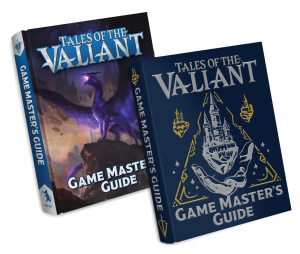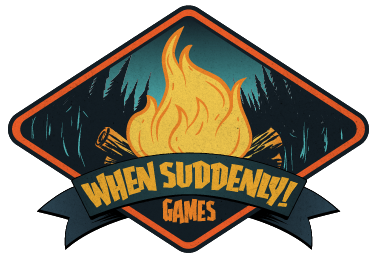By Jason Campbell
NOTE: no money or concessions were provided in exchange for this review.
Tales of the Valiant is a 5e based RPG published by Kobold Press. The first book, Player’s Guide, was released in early 2024.

Overview
The Tales of the Valiant Game Master’s Guide is exceptionally well done. It is the best guide for game masters that I’ve ever read across the 50 year history of RPGs. It is a hardcover book of 384 pages with full color art within. Note that the 384 page count is even more impressive as most of the magic items for the Tales of the Valiant system are contained in the Player’s Guide.
Inside the Book
The order that the information is presented in this guide is well thought out and organized. This was a common complaint about the 2014 Dungeons & Dragons Dungeon Master’s Guide. The book’s introduction tells the reader that the rules for playing the game are mostly contained in the Player’s Guide and the Monster Vault while this book is concerned with advice about playing and administering the game. It outlines each chapter in a few sentences, making it easier for experienced game masters to find where they’d like to concentrate their reading.
The first chapter, “How to be a GM”, explores different player styles and advice for preparing and running a session. The section on pacing i a welcome addition absent from many similar guides.
The second chapter, “Adventures & Campaigns” contains great advice for running published adventures as well as advice for creating campaigns of many styles. The third chapter, “Worldbuilding” includes valuable advice about spiraling outward and using secrets and clues.
The following three chapters explore each of the “three pillars” of fantasy RPGs: “Advanced Combat”, “Advanced Exploration” and “Advanced Social”. They’re titled “Advanced” because the mechanics of the game are contained in the Player’s Guide. The combat chapter discusses the differences between using a battle grid and theater of the mind and how to choose what’s right for your table and game. There is a detailed combat building system, with many examples (“Hordes”, “Twin Bosses”, etc) which really help GMs understand how to use the combat building formulae. There’s also sections with advice on aerial combat, and a welcome section on morale.
The “Advanced Exploration” sections introduce hazards – a stat block similar to monster stat blocks with information on using them within your game. This is a significant value of this book – it doesn’t just give you philosophical advice, it also breaks ideas down into pieces and shows how to use them in your game. This chapter also has an extensive set of tables for randomly generating dungeons, which really brought me back to 1978’s Advanced Dungeons & Dragons Dungeon Masters Guide’s appendix.
The “Advanced Social” chapter has tables for generating NPCs and gives them motivations.
Following chapters list many curses and traps, using the hazard stat blocks mentioned earlier to make it easier to use within your game. The “Homebrewer’s Toolbox” chapter begins with good advice on the difficulties in making changes to game rules.
Conclusion
We highly recommend the Tales of the Valiant Game Master’s Guide, but not just for GMs running Tales of the Valiant. Because most of the rules mechanics are left to the Player’s Guide and Monster Vault, this book is a great guide for GMs running and 5e based game, such as Level Up advanced 5e or Dungeons & Dragons (5.14 or 5.24 versions). Much of the book will even be valuable to GMs running any fantasy RPG.
What do you think? Have you read the Game Master’ Guide? Let us know in the comments.






I don’t run ToV or 5e (I’m a Cypher System, Year Zero Engine) go and I still found this one of the best GM guides I’ve ever read.